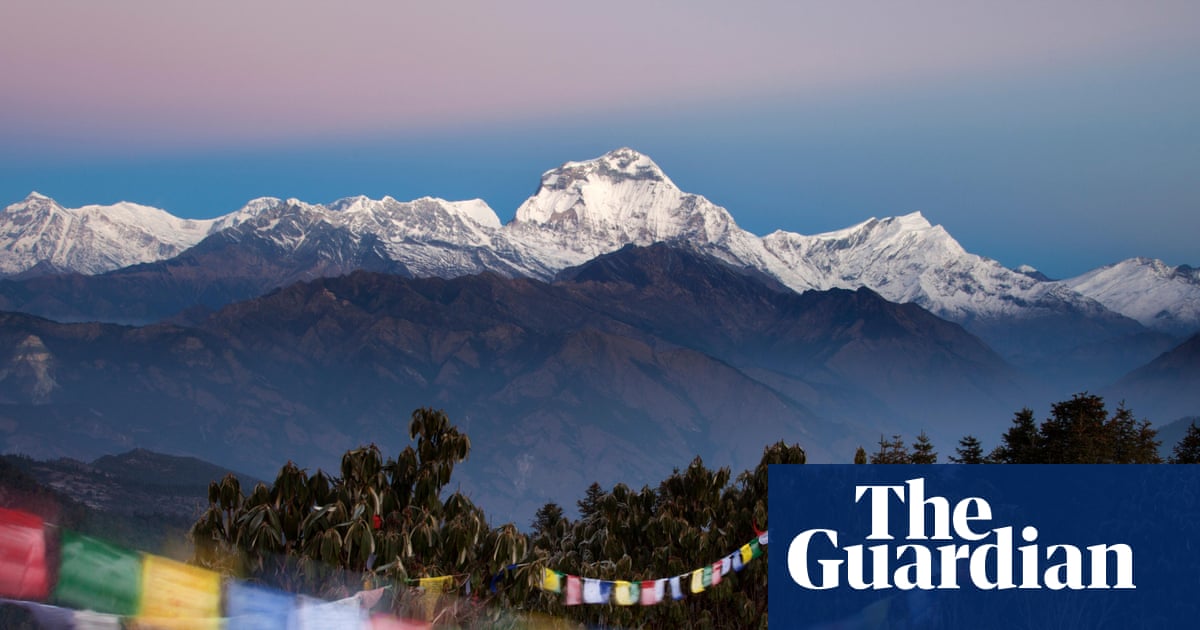Some philosophers find inspiration in mountains, such as Nietzsche, and some in caves, like Plato. Clare Carlisle found hers in a cave halfway up a mountain.
It happened 20 years ago: walking on a Himalayan path, she met a holy man who lived in a cave nearby. Not your stereotypical sadhu, he didn’t have matted hair and wasn’t semi-naked but wore nice trousers and an acrylic pullover. Nor did he have any obvious wisdom to impart; at the last of their three meetings, he and Carlisle mainly got stoned and giggled about the chicken-like patterns on a cushion she had brought him as a gift. Yet, after leaving, she felt a “yearning” for something that they had shared: a sense that there could be a more “noble” way of living, or that we could experience “transcendence”, a higher perspective on life.
Carlisle went on to have an eminent career as a philosophy professor and the acclaimed biographer of Søren Kierkegaard and George Eliot. The holy man receded from her mind until she was invited to give the 2024 Gifford Lectures, a venerable series dedicated to the theme of “natural theology”. She decided to make the encounter her starting point for the six talks, and now for these six interlinked essays based on them.
The opening essay sets the scene by telling the Himalayan story, while the remaining five lead us onward and upward. The most interesting step comes in the second essay, in which Carlisle uses her own experience of writing biography to point out a dramatic difference in two ways of thinking about human lives.
While we are living our own life, it is a flowing, varied and incomplete thing. We are immersed in it, as if in a river. New experiences flood in on us or rain down like a “shower of atoms”, as Virginia Woolf wrote. But we cannot generally step out of the temporal flow to get a more elevated view of the entire shape and meaning of our experience. For a biographer writing about someone in the past, however, everything shifts. The life is completed and you are outside it. The details may be less rich than they were to the living person but the view over it is better. You can float up, as it were, to see what shape the person’s time-flow formed, as when a satellite picture shows the full course of a river. Liberated from time, you can see the life “under the aspect of eternity”, to borrow Spinoza’s phrase.
Carlisle illustrates the difference with a children’s fable told in Karen Blixen’s Out of Africa. In brief: a man stumbles around in the mud for a while in the middle of the night. He loses his way, changes direction and trips over a few things before going back to bed. Only when he wakes up and sees the scene by daylight does he realise that his footprints have traced out a perfect picture of a stork. The point is that, by living, we create a meaningful picture without knowing it – unless we attain some inkling of that wider view through art or mysticism.
This idea that we “manifest” something in life is explored through the rest of the book. Each essay leads us further up into the conceptual clouds and closer to the idea of transcendence. The Milieu looks at the various wider contexts a life can have – historical or social, for example. Incarnations examines spiritual possibilities as embodied by individuals. Arunachala partly concerns another cave-dwelling sage, Ramana Maharshi, who got over a personal fear of death to become a mystic and teacher. The final chapter, Transcendence for Beginners, ties it all together, asking whether we can have access to a noble or radiant realm while still in the midst of life.
By this time, we have climbed quite a mountain of ineffability, but Carlisle has led us so gently step by step that we are willing to follow. Like William James – an earlier Gifford lecturer also fascinated by experiences that are hard to describe – she combines close readings of texts (notably those of Spinoza, Eliot and Proust) with examples from her own life. Sometimes, the citations fly past too quickly, but her extended analyses are both touching and enlightening: I especially liked her reading of Eliot’s Daniel Deronda and passages on the artist Celia Paul.
Having arrived at the ending, we look back to see that we have traversed territory that is not completely religious but is not merely aesthetic or literary or psychological either. Like the man in Blixen’s fable, we see a picture traced by our steps, but I suspect it may vary for each reader, and even for the same reader at different times and in different moods. This is to Carlisle’s credit: we can make our own shape out of her words because she is never dogmatic and because she is clearly on an open-ended quest herself. All possibilities remain alive in this subtle, generous and humane book.
